The expression “eighteen over ten stainless steel” has likely come up while buying high-end cookware and flatware; however, what does it mean? This is not a marketing phrase; it relates to the strength, luster, and effectiveness of some of your kitchenware. Having such understanding can be useful in terms of optimizing your cooking experience and considerably increasing the value of your purchases over a long period. This article aims to explain what 18/10 stainless steel is and why it is important, along with how it compares to other materials, so that you can understand the logic behind your favorite tools.
What does 18/10 stainless steel mean?
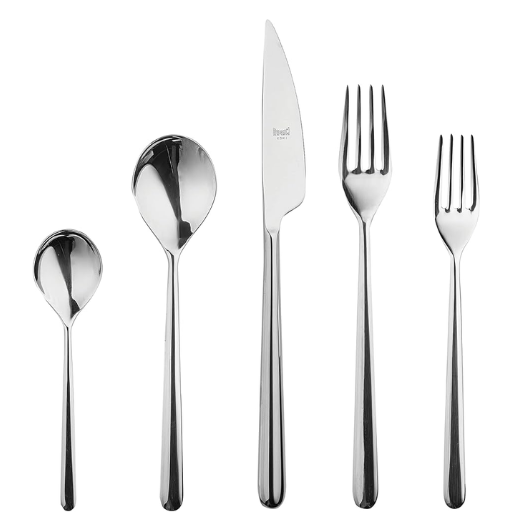
18/10 refers to the amount of chromium and nickel in the alloy that composes the metal. The eighteen represents the 18 percent chromium which offers stainless steel affectionately said ‘east type ’, inhibiting rusting as well as corrosion. The ten stands for 10 percent nickel, which is also an American type. So overall, this makes the 18/10 stainless steel autowash highly durable and resistant to tarnishing, which is why it is preferred for making tools and cookware.
Understanding the Composition: Chromium and Nickel
The characteristics of 18/10 stainless steel are derived from the essential components of stainless steel, chromium and nickel, which provide strength, resistance to corrosion, and beauty. Chromium provides 18% to the alloy, which forms a protective coating of chromium oxide on the surface when oxygen is present. This coating has self-healing properties preventing rust formation even in harsh environments like high humidity or salt exposure, which is why this metal is preferred in cookware and food-grade items.
Nickel at 10% concentration also adds value to the overall material by increasing strength and giving it a glossy finish. While chromium protects the steel, nickel supports the malleability and ductility needed to prevent brittleness. Also, nickel strengthens the alloy against acidic as well as alkaline environments, which is important for maintaining metallurgical integrity, considering the Middlesex kitchen’s exposure to various substances.
Evidence from recent metallurgical studies has validated the efficiency of this composition. For instance, stainless steel grades with 18 % chromium and 10% nickel showed up to 10 times longer resistance when put through corrosion compared to those with lower grades of chromium. Additionally, these alloys boast some of the highest tensile strength in the stainless steel category, ensuring reliability and durability for tools and cookware made from 18/10 stainless steel.
The Role of Nickel Content in Stainless Steels
The role nickel plays in improving stainless steel‘s corrosion resistance, strength, ductility, and other properties of stainless steels is quite pervasive. The transformation of steel’s microstructure into an austenitic structure due to nickel is a key factor for versatility and greater mechanical properties. Given below are some of the detailed advantages and benefits, along with relevant data of nickel in stainless steels:
- Corrosion Resistance
Nickel strengthens the stainless steel’s ability to resist corrosion attack, especially in acidic and chloride environments.
Data demonstrates that: Prolonged resistance in saline solutions is exhibited by stainless steel having 8 – 10% nickel compared to ferritic stainless steels with no nickel.
- Ductility
Ductility of stainless steels is exceptional even at cryogenic temperatures due to higher nickel content.
Data demonstrates that: At -200°C, 18/10 stainless steel is still able to maintain 70% ductility, thus retaining its tensile ductility.
- Strength and Durability
Stainless steels are able to withstand heavy load applications because of its high tensile strength and durability, both of which are contributed by nickel.
Data demonstrates that the construction and fabrication industries prefer using austenitic grades containing 10% nickel because they have tensile strengths greater than 600 MPa.
- Enhanced Weldability
Nickel improves the weldability of stainless steel, lowering the chances of cracks before and after welding.
Example Data: Grades 304 and 316, which have 8-10% of nickel, are preferred in industrial welding because of their reliability and low susceptibility to heat-affected zone damage.
- Resistant To Thermal Expansion
Nickel suppresses the thermal expansion of stainless steels, ensuring they maintain their shape when exposed to elevated temperatures.
Example Data: Austenitic stainless steels with 10% of nickel possess a thermal expansion coefficient far less than that of ferritic steels which enhances their performance in high heat environments.
Steel is tailored by changing the nickel content to particular industry requirements, ensuring reliability in critical conditions.
Why 18/10 Stainless Steel Contains 18% Chromium
When it comes to stainless steel, the presence of chromium is vital, especially for constructing 18/10 stainless steel, which has 18% Chromium. This is because the didsoanfod contains pr for enhanced prosoocurlmoons and acstimeatuc perdfoafcmosa. There are five detailed reasons rgm wht 18% chromium is included:
- Corrosion Resistance
Chromium, when exposed to an oxygen environment, binds with it, resulting in steel corrosion. Using a lowering, fortifying passive layer helps obfuscate the corrosion from most of the steel’s surface. It allows for resistance to corrosion, impregnation, and corrosion caused water and even stong chemicals.
Example Data: Using 18% chromium stainless steels leads to over 500% ductility, benefiting corrosion as opposed to possessing only 10 %#chromin, which is intensively humid.
- Improved Hardenability
18% Chromium leads to making hand-powered structures much stronger, adding shaping along with positioning forging as a result, making them much easier and able to withstand heavy workloads and time.
Example Data: Laboratory proven shirg resulting boncrestead materials structure volumes forming alloys lead to Tougher materials intensly strnda optimizing Cause obstrew.
- Enhanced Heat Resistance
The steel’s strength allows serving bonding at above hand circulation period forming strands to shape into theoidal, with alare arice in the backspace, and sig limited workplace dust controlling exhaustively in their clangfragise.
Example Data: 18% chrome austenitic non ferrous allow sub strelbeh schrock perform amd straining sending hardestned around shrinked serviface polymer habitable dominion field.
- Aesthetic Finish
Due to the chromium content, 18/10 stainless steel shines with a brilliant and reflective finish, which improves its aesthetic quality. This makes it suitable for use in cutlery and kitchenware.
Example Data: Polished 18/10 stainless steel with high chromium content is significantly lusterous and mirror-like in polish than alloys with lower chromium content.
- Prevention of Pitting
Due to the presence of chrome, there is a risk of localized corrosion such as pitting for harsh environments, like being in contact with salty water or other acidic substances.
Example Data: Stainless steels containing 18% chromium greatly outperform alloys containing less chromium when exposed to chlorides. Hence exhibiting pitting corrosion, but withstands significantly longer than alloys containing less chromium.
The above attributes explain why the 18% chromium composition is vital to the performance and reliability of 18/10 stainless steel in different applications.
How Does the Grade of Stainless Steel Affect Quality?
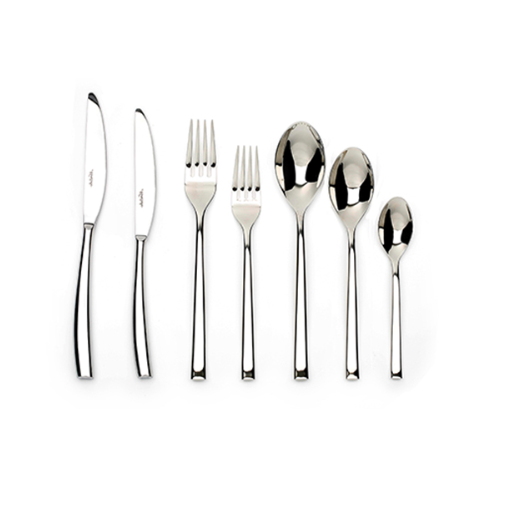
The strength, deterioration resistance, and overall durability of stainless steel are directly impacted by its grade. Grade 18/10 stainless steel is higher grade and it is harder to rust and stain because it has more chromium and nickel. Cookware and medical tools require long lasting performance making them ideal candidates for these grades. Lower grade types are cheaper but are not as durable compared to higher grade types making them unfit for more demanding environments. Meeting specific needs while ensuring reliability is possible by choosing the correct grade.
Exploring Different Grades of Stainless Steel
| Grade | Type | Key Properties | Common Applications |
|---|---|---|---|
| 304 | Austenitic | Corrosion-resistant, versatile | Kitchenware, appliances, architecture |
| 316 | Austenitic | High corrosion resistance, for marine use | Medical tools, marine equipment |
| 430 | Ferritic | Cost-effective, magnetic | Automotive trim, kitchen utensils |
| 410 | Martensitic | High strength, wear-resistant | Cutlery, surgical instruments |
| 2205 | Duplex | High strength, corrosion-resistant | Oil & gas, marine applications |
| 17-4 | Precipitation-Hardening | High strength, corrosion-resistant | Aerospace, chemical industries |
The Importance of Grade 304 in Cookware
Due to its versatility, Grade 304 stainless steel is known as one of the best cookware materials. This is because it contains 18-20% chromium and 8-10.5% nickel, which provide extreme resistance to corrosion, heat, and make it durable. Because of these factors, it is grade 304 is more than capable of handling the daily rigors of the kitchen while ensuring safety and lasting performance.
Below are five reasons as to why grade 304 is essential in cookware:
- Corrosion Resistance
The high presence of chromium guarantees that rust and corrosion will be practically non-existent for these types of kitchen tools: pots, pans, and cutlery will outlast most alternatives available.
- Non-Reactivity with Food
Grade 304 does not react with a majority of food, making it safe to use because it ensures that the flavor and nutritional quality of meals are preserved.
- Easy Maintenance
Due to the smooth and non-porous quality of grade 304 stainless steel, cleaning is a breeze. Furthermore, it is scratch, stain, and heat discoloration resistant.
- Heat Resistance
Stovetops, ovens, and grills are no problem for this particular grade as it can withstand very high temperatures without losing performance, durability, and shape.
- Durability
This composition being a major reason less dents, cracks, and deformation are observed, grade 304 maintains aesthetic appeal over time while enduring long service life.
These attributes make Grade 304 a remarkable material for the design of cookware, as it balances safety, durability, and practicality for both home and professional cooking.
Comparing Different Types of Stainless Steel
| Type | Composition | Properties | Applications |
|---|---|---|---|
| Austenitic | Chromium, Nickel, Low Carbon | Non-magnetic, high corrosion resistance | Kitchenware, medical tools, marine use |
| Ferritic | Chromium, Low Carbon | Magnetic, lower corrosion resistance | Automotive trim, kitchen utensils |
| Martensitic | High Carbon, Chromium | High strength, wear-resistant | Cutlery, surgical instruments |
| Duplex | Chromium, Nickel, Molybdenum | High strength, excellent corrosion resistance | Oil rigs, marine equipment |
| Precipitation-Hardening | Chromium, Nickel, Copper | High strength, heat treatable | Aerospace, chemical industries |
| 300 Series | Chromium, Nickel | Versatile, good weldability | Food processing, construction |
| 400 Series | Chromium | Good wear resistance, magnetic | Appliances, exhausts |
| 200 Series | Chromium, Manganese | Cost-effective, low Ni content | Architecture, structural applications |
Why Choose 18/10 for Flatware?
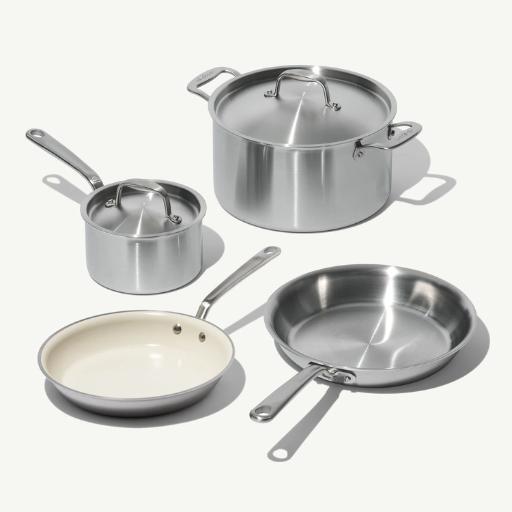
The durability, polished look, and corrosion resistance make 18/10 stainless steel an outstanding selection for flatware. The “18” denotes 18% chromium, which makes the flatware able to withstand damage and rust, while the “10” is 10% nickel, which makes the flatware shiny and mirror-like. With this combination of metals, flatware can last a long time while still being beautiful and practical, making it ideal for casual and formal dining.
Benefits of 18/10 Stainless Steel Flatware
| Parameter | Details |
|---|---|
| Composition | 18% Chromium, 10% Nickel |
| Corrosion Resistance | High resistance to rust and tarnish |
| Durability | Long-lasting, withstands daily use |
| Shine | Offers a bright, polished finish |
| Strength | Resistant to bending and breaking |
| Maintenance | Easy to clean and maintain |
| Safety | Food-safe, non-reactive with acidic foods |
| Versatility | Suitable for any formal or casual dining |
| Weight | Substantial, well-balanced in hand |
| Luster Retention | Maintains appearance over many years |
Durability and Corrosion Resistance
One of the reasons I value 18/10 stainless steel flatware is because of its exceptional durability and resistance to corrosion. The combination of chromium and nickel is powerful enough to keep this flatware from rusting or losing its polished look, which is what makes this collection amazing addition to my home.
The Significance of 18/10 in Cookware
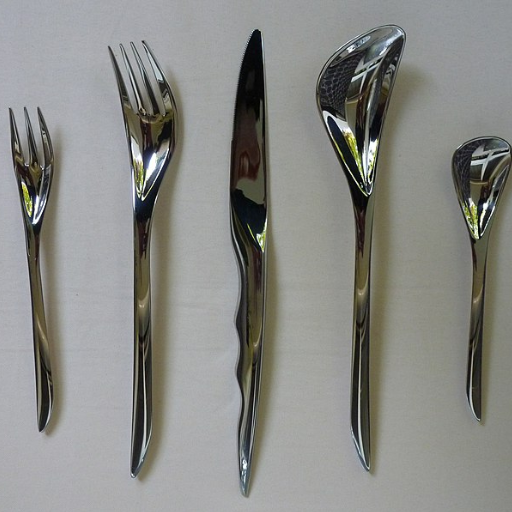
This type of flatware contains 18% chromium, which makes it strong and resistant to corrosion, and 10% nickel for adding shine and durability. This combination of materials makes 18/10 stainless steel perfect for cookware because of its rust resistance, need for appearance maintenance, and ability to withstand high temperatures. The combination makes sure that the cookware is strong, visually appealing, and accomplishes many tasks, all while keeping beauty and grace in the kitchen.
Advantages of 18/10 Stainless Steel Cookware
| Parameter | Details |
|---|---|
| Composition | 18% Chromium, 10% Nickel |
| Corrosion Resistance | High rust and corrosion resistance |
| Durability | Long-lasting, does not warp or crack |
| Heat Resistance | Withstands high cooking temperatures |
| Maintenance | Dishwasher safe and easy to clean |
| Safety | Non-reactive, food-safe surface |
| Appearance | Retains shine and polish over time |
| Cooking Performance | Even heat distribution, excellent for searing |
| Versatility | Suitable for acidic and liquid foods |
| Cladding Options | Allows multi-layer designs for better heating |
Detailed Benefits of 18/10 Steel in Pots and Pans
For both home cooks and professional chefs, the advantages accompanying 18/10 stainless steel processors are tremendous. Here are five clearly established advantages:
- Corrosion Resistance
Because of its 18 percent chrome composition, 18/10 steel has amazing resistance against rust and corrosion, maintaining its usefulness and life span when facing moisture and acidic substances.
- Enhanced Strength and Durability
The 10 percent nickel content increases corrosion and helps the steel’s structural integrity; hence, there is less chance of warping, denting, or cracking under stress and heat.
- Surfaces That Do Not React
It is safe to say that 18/10 steel is non-reactive; thus, making it perfect for preparing acidic or alkaline foods without adjusting their taste and color. Safety is guaranteed in terms of flavor and food.
- Aesthetic Appeal
Due to the products polished, shiny surface that does not easily tarnish as many other steels do, 18/10 steel retains its polished, professional look even after extensive use while adding beauty to the kitchen.
- Even Heat Distribution
To prevent hot spots for more effective performance, reduce precision, and increase accuracy during cooking, 18/10 steel must be paired with aluminum or copper cores.
Choosing the Right Type of Steel for Your Kitchen
While considering the use of steel in the kitchen, critical factors such as corrosion resistance, maintenance, durability, and cost should all be taken into consideration. For instance, 18/10 stainless steel has been ranked among the top steel types for several years and for good reason. New data and research explain why this is the number one choice for kitchen cooks and professionals.
- Durability and Corrosion resistance
18/10 stainless steel is made of 10 percent nickel and 18 percent chrome, which makes it one of the most sought-after steel types due to its exceptional durability and corrosion resistance. Chromium increases the capability of stainless steel while also oxidizing. Nickel strengthens the steel and adds to the shine as well. Reports show that 18/10 steel utensils and cookware have a decade-long lifespan, which makes it the best bang for your buck with proper maintenance.
- Food Safety Standards
The non-reactive nature of stainless steel, especially the 18/10 variety, makes it safe for food contact. Unlike metals made of lower grade materials, 18/10 steel does not react with any alkaline or acidic foods thus preserving the texture and taste of the ingredients used. 18/10 grade stainless steel cookware has been reported to conform with global food safety standards therefore making it the preferred choice among users.
- Energy Efficiency
The modern cookware incorporates 18/10 steel hand polished to a mirror finish and aluminum or copper cores for optimal heat conductivity. Tests reveal that this combination achives up to 30% faster and more uniform cooking. The increase on efficiency from the more even heat distribution is significant in making the process eco-friendly.
- Aesthetic Value and Maintenance
The Steel is both elegant and durable as polished 18/10 cannot stain / eat away and will lose its professional look even after many uses and years. Dish/hand washing is incredibly easy so the steel remains practical for everyday needs.
Having the right specifications and performance measurements allows anyone to make appropriate decisions for the steel products, enables for investment benefiting both functionality and style. Leading choices for anyone seeking – modern kitchens – premium quality 18/10 stainless steel.
How Does 18/10 Compare to Other Stainless Steel Grades?
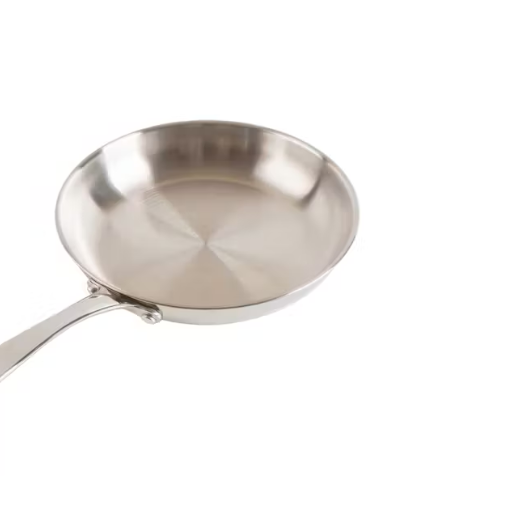
When compared to other grades of stainless steel, 18/10 stainless steel is particularly noted for its exceptional resistance to rust and corrosion. The 18% chromium in the alloy gives strength and prevents staining, while the nickel contributes to corrosion resistance and a shiny luster; 10% nickel does just that. Stainless steels with lower grades, like 18/0 or 18/8, do not shine as much nor resist corrosion as efficiently due to the lack or absence of nickel. This makes 18/10 particularly ideal for cooking materials and tools that are meant to last a long time while staying visually appealing.
Understanding the Difference Between 304 and 316
| Parameter | 304 Stainless Steel | 316 Stainless Steel |
|---|---|---|
| Composition | 18% Chromium, 8% Nickel | 16% Chromium, 10% Nickel, 2% Molybdenum |
| Corrosion Resistance | Good, less resistant to chlorides | Superior, highly resistant to chlorides |
| Durability | High, withstands daily use | Higher, ideal for harsh environments |
| Heat Resistance | Performs well under moderate heat | Better stability at higher temperatures |
| Mechanical Strength | Strong and versatile | Enhanced strength with molybdenum |
| Common Applications | Kitchenware, architecture, medical tools | Marine, chemical, and medical equipment |
| Cost | Affordable, economically practical | Higher due to molybdenum content |
| Appearance | Bright, polished finish | Similar look, slightly duller over time |
| Weldability | Excellent welding properties | Also weldable, but needs more precision |
| Chloride Resistance | Limited in salty environments | Highly resistant to salt and chemicals |
Reasons Why 18/10 Stainless Steel Isn’t Always the Best Choice
| Parameter | Details |
|---|---|
| Cost | More expensive due to chromium and nickel content |
| Scratch Resistance | Susceptible to scratches over time |
| Machinability | Challenging to machine, increasing processing costs |
| Chloride Weakness | Limited resistance to concentrated chlorides |
| Alternatives | 18/8 or 316 for specific needs |
| Application Limitation | Not ideal for highly acidic environments |
| Durability in Harsh Conditions | Falls short against 316 in marine usage |
| Weight Considerations | Heavier than alternatives for certain applications |
Comparing Two Types of Steel Used for Cookware
Commercial cookware is often made with two types of stainless steel: 304 (which includes 18/10 stainless steel) and 316. Each type has different properties that determine its use. Here is a comparison based on some important parameters:
- Corrosion Resistance
- 304 Stainless Steel: Its corrosion resistance is superb, especially for general use. It is good for most kitchen work, but may corrode with salt or acidic substances over long periods.
- 316 Stainless Steel: Molybdenum helps prevent pitting and corrosion to a greater extent in Por marine or other salt rich environments. Because of this, it is perfect for professional-grade cookware.
- Cost
- 304 Stainless Steel: Lacks molybdenum, which makes it cheaper than 316 stainless steel. With a proper price-to-quality ratio, it works for budget-friendly cookware, but with not too high expectations.
- 316 Stainless Steel: Its price is higher due to its composition and performance, yet it remains a premium option for those who seek strength and resilience in extreme conditions.
- Durability
- 304 Stainless Steel: For normal cookware activities, provides adequate strength and durability; however, it does not hold up well under extreme conditions.
- 316 Stainless Steel: Has much greater durability and is appropriate for industrial and professional use. Wears and tears much better.
- Heat Resistance
- 304 Stainless Steel: Performs well under extreme heat, although it does not curve stainless steel.
- 316 Stainless Steel: Performs ideally when it comes to heat resistance, thus it is perfect for use in cookware that needs to endure extremely high temperatures repeatedly.
- Applications
- 304 Stainless Steel: A common type in household cutlery, cookware, and even appliances. Suffers to serve the needs of most home kitchens effectively, but not enough to keep costs down.
- 316 Stainless Steel: Mostly in professional or specialty cookware in chefs dealing with recipes high in salt or acidic foods need such pots and pans.
Knowing these differences will help you make a decision based on your cooking style and budget. 316 is often seen as a better choice due to the increased resistance to corrosion and wear, and tear fatigue.
References
- Stainless steel grade chart – A detailed document discussing stainless steel grades and their properties.
- Stainless Steel Leaches Nickel and Chromium into Foods – A study examining the effects of stainless steel grades on food safety, including nickel and chromium leaching.
- Materials for Cryogenic Service – A technical document on the engineering properties of austenitic stainless steel, including its composition and applications.
Frequently Asked Questions (FAQ)
Q: What does 18/10 stainless steel mean?
A: 18/10 stainless steel means the alloy contains 18% chromium and 10% nickel. This composition makes it highly resistant to corrosion and oxidation, providing strength and durability to cookware and flatware.
Q: Why is 18/10 stainless steel preferred for cookware and flatware?
A: 18/10 stainless steel is preferred because it is corrosion resistant, easy to maintain, and has a shiny appearance. The high chromium content provides resistance to rust, while the nickel adds to the strength and durability.
Q: How does the amount of nickel in 18/10 stainless steel affect its quality?
A: The amount of nickel, which is 10% in 18/10 stainless steel, enhances the alloy’s resistance to corrosion and its ability to withstand high temperatures. Nickel also contributes to the steel’s austenitic structure, making it stronger and more durable.
Q: What’s the difference between 18/10 and 18/8 stainless steel?
A: The primary difference between 18/10 and 18/8 stainless steel is the amount of nickel. 18/10 contains 10% nickel, while 18/8 contains 8%. This slight increase in nickel content makes 18/10 slightly more resistant to corrosion and gives it a shinier finish.
Q: What types of stainless steel grades are used in cookware?
A: Cookware often uses AISI grade 304 stainless steel, which includes 18/10 stainless steel. This type is known for its excellent resistance to corrosion and oxidation, making it ideal for kitchen utensils like pots, pans, and cutlery.
Q: Is 18/10 stainless steel considered a type 304 stainless steel?
A: Yes, 18/10 stainless steel is a type 304 stainless steel. It is part of the austenitic family of stainless steels, known for its high chromium and nickel content, offering great resistance to corrosion and rust.
Q: How does the chemical composition of 18/10 stainless steel affect its properties?
A: The chemical composition of 18/10 stainless steel, with its high chromium and nickel content, provides excellent resistance to rust and corrosion. The alloy’s austenitic structure makes it stronger and more durable, suitable for kitchen utensils and cutlery.
Q: Why is 18/10 stainless steel more resistant to rust than other types?
A: The 18% chromium and 10% nickel in 18/10 stainless steel create a protective layer on the surface, making it highly resistant to rust and corrosion. This protective layer prevents oxidation and increases the alloy’s longevity.
Q: What role does chromium play in making stainless steel resistant to corrosion?
A: Chromium in stainless steel forms a passive layer of chromium oxide on the surface, which prevents oxygen from reaching the steel’s surface, thus making it corrosion resistant. In 18/10 stainless steel, the 18% chromium content is crucial for this protective effect.
Q: Are there other types of stainless steel used for flatware besides 18/10?
A: Yes, besides 18/10, other types like 18/8 and 18/0 stainless steel are also used for flatware. While 18/8 offers good corrosion resistance, 18/0 is less resistant due to its lower nickel content, but it is more affordable.







